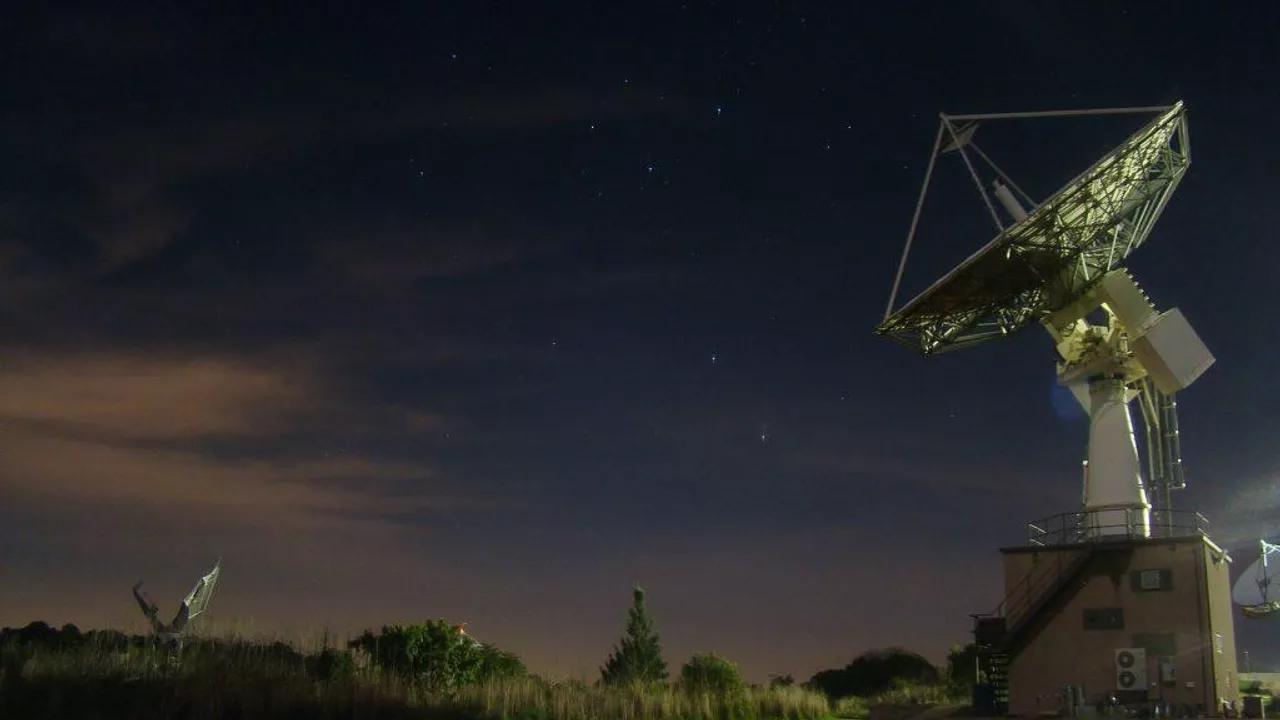Africa-Press – Botswana. The successful launch of Botswana’s historic satellite, the BOTSAT-1 demonstrates the country’s space capabilities and positions her to fully utilise rapidly growing opportunities in the space industry for national development
In an interview, BOTSAT -1 Project lead, Dr Dimane Mpoeleng, said the satellite, which was launched on Saturday from the Vandenberg Space Force Base, California, United States of America, would provide hyper spectral imaging capabilities important to drive development and help decision makers.
BOTSAT-1 was among the 50 satellites carried aboard SpaceX’s Falcon 9 Transporter 13 mission and will be operating at a Low Earth Orbit (LEO) altitude of approximately 500km.
The satellite will scan Botswana from east to west, covering a swath of approximately 32km with a resolution of 12 metres.
Additionally, BOTSAT-1 will operate in a near-polar and sun-synchronous orbit, maximising the revisit time and day observations over Botswana.
The launch, which President Advocate Duma Boko had been slated to attend, as part of his working visit to America recently, was delayed due to adjustments in the launch provider’s mission to accommodate multiple payloads as it was initially scheduled for launch early this month.
Dr Mpoeleng explained that the satellite would transmit data through its fully operational ground station located at the Botswana International University of Science and Technology (BIUST).
He said the development of BOTSAT-1 spanned four years, from its initial announcement to completion and that government pledged to allocate P33 million per year toward the project.
Following the launch, he said, the BOTSAT- 1 team would begin stabilising the satellite by reducing its uncontrolled rotation or tumbling motion after deployment into space, known as satellite detumbling.
For this, he explained, the team would target two ground stations to assist in the process; one in Bulgaria (home to the lead satellite manufacturer – Enduorsat) and the BOTSAT-1 ground station at BIUST, and within several weeks into its operation, the team would start receiving the first images from the satellite.
“An interesting point of view is that the first message to be shared by the satellite will be the beacon of the country’s national anthem in Setswana,” he said.
The satellite has passed through various stages of development and completed its Assembly, Integration and Testing (AIT) phase in September 2024, marking the last significant milestone before its transportation to its launch location.
He said the data would be useful for the country’s national development priorities such as enhancement of mining operations, improvement of urban planning, support disaster management for monitoring flood, droughts, wildfires food security, environmental conservation and urban planning.’
“The satellite presents direct investment in Batswana’s quality of life, ensuring better resource management, economic resilience and environmental protection,” he said.
Dr Mpoeleng said the satellite would further provide better resource management, creation of new opportunities that could drive innovation and entrepreneurship as well as strengthening the country’s technical capabilities for future developments.
“BOTSAT-1 would transmit data through its fully operational ground station located at BIUST and that in future there will be room for easy access by Batswana and other end-user and uplink user access.”
“The beneficiation phase will come later. We are also encouraging the government and other related agencies to set up data centres to allow access to these images, which can enhance the commercialisation of satellite data. This would enable other stakeholders, such as small businesses, entrepreneurs, and innovators, to fully utilise the outputs,” he said.
Dr Mpoeleng said BIUST partnered with several organisations to make the launch of BOTSAT-1 successful, with key engineering partner for the mission being EnduroSat from Bulgaria, and launched by SpaceX in California as part of the Transporter missions.
Meanwhile BIUST Vice Chancellor, Prof. Otlogetswe Totolo explained that in the absence of the country’s satellite, Botswana was spending huge amounts of money on imported data from external satellites.
With rife use of satellite images needed for mineral exploration and urban planning among other things, he said, it was high time Botswana owned a satellite. To this end, he said BIUST saw the need to leverage the university’s highly qualified engineers to generate significant economic returns through harnessing the power of space technology.
The launch of BOTSAT-1 brings Africa’s total satellite launches to 65, joining 10 other countries operating earth observation satellites leveraging satellite data to tackle regional challenges in agriculture, resource management, and disaster preparedness.
For More News And Analysis About Botswana Follow Africa-Press






